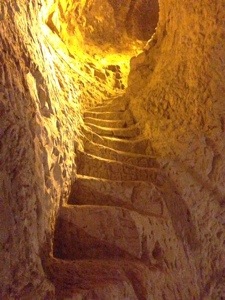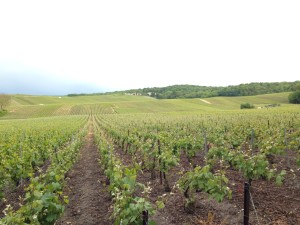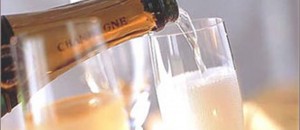The Champagne Countdown is on! In only 10 days I will be back in beautiful Champagne with another group of enthusiastic champagne lovers excited to discover more about the magic of champagne!
As the anticipation builds, I have put together my list of the
Top 10 reasons to visit Champagne
10. To discover the history
 The champagne region is steeped in history. From the influence of the Ancient Romans to the coronation of the French Kings; from the accidental bubbles to the well crafted vintages; from the Benedictine monks to the entrepreneurial widows; from the disaster of phyloxera to the triumph of World Heritage listing – there is so much to learn!¹
The champagne region is steeped in history. From the influence of the Ancient Romans to the coronation of the French Kings; from the accidental bubbles to the well crafted vintages; from the Benedictine monks to the entrepreneurial widows; from the disaster of phyloxera to the triumph of World Heritage listing – there is so much to learn!¹
9. To understand the ‘terroir’
Champagne has a very unique set of climatic and topological characteristics that each play a role in the distinctive features of champagne. Because it is very north and a cooler climate with very few days of sunlight a year, the grapes struggle to ripen. In order to produce a balanced champagne, a balance of sugar and acidity is required. Natural sugar from the grapes produce the alcohol that gives the wine structure and roundness, and the acidity from the grapes adds crispness to the drink. The acidity is naturally higher in grapes grown in such a northerly position. Additionally the amount of sunshine that vines get depending on the slope of the vines, plays a part in the grape’s ripeness. Not only that, but the way the land has formed in the Parisian Basin over millions of years means that in different parts of champagne, there are different soils and subsoils. Different grapes do better in different soils, so the individual areas are planted depending on what variety grows best!
Is your head spinning yet?
It’s all very well and good to read about it and try to remember, but actually visiting the area, seeing the slopes, seeing the different vines planted and then tasting them while you are there leads to a different level of understanding.
8. To visit the chalk pits or ‘Crayères’
 Reims and Epernay are actually situated above huge seams of Cretaceous chalk. Back in the Gallo-Roman period, huge chalk mines were dug to build the city of Reims. As the pits were dug deeper, they broadened out into almost cathedral like spaces. The mines were eventually closed and lay unused for many years until Claude Ruinart came along in 1768 and decided that they would make a wonderful place to store champagne. The chalk this deep underground naturally maintained constant temperature and humidity, ideal for long term storage. Other producers started to follow suit as expansion of the champagne trade forced them into finding more storage solutions, and soon galleries were enlarged and further excavated. The hundreds of kilometres of cellars came in very handy during bother World Wars, when citizens took shelter to escape the bombardment of German artillery when their houses and vineyards were destroyed.
Reims and Epernay are actually situated above huge seams of Cretaceous chalk. Back in the Gallo-Roman period, huge chalk mines were dug to build the city of Reims. As the pits were dug deeper, they broadened out into almost cathedral like spaces. The mines were eventually closed and lay unused for many years until Claude Ruinart came along in 1768 and decided that they would make a wonderful place to store champagne. The chalk this deep underground naturally maintained constant temperature and humidity, ideal for long term storage. Other producers started to follow suit as expansion of the champagne trade forced them into finding more storage solutions, and soon galleries were enlarged and further excavated. The hundreds of kilometres of cellars came in very handy during bother World Wars, when citizens took shelter to escape the bombardment of German artillery when their houses and vineyards were destroyed.
This underground network is still used today, and a walk through the crayères is an almost ethereal experience – marks of the miners tools on the wall, and drawings and notations may by those hiding during the war are evidence of a very long history. You can almost feel the ghosts of the past.
7. To meet the locals
The Champenois must be some of the most generous and hospitable people in the world. I have said many times that the people from the region have bubbles in their blood. An experience with a local grower and a tasting of their range as they explain the intricacies of their particular vines is quite something. They all share a common passion about their product and their region. And they will never leave a bottle unfinished. It is not uncommon to be told that you can’t leave just yet because the bottle is not empty!
Likewise, to be surrounded by the elegance and historical importance of the larger houses leaves you awestruck from the realisation of the wealth of bottles beneath your feet and the streets of the city.
6. To eat the food
Apart from making wine, the French do gastronomy very well. One of the reasons they succeed so well in gastronomy is because they respect the seasons and the local produce. Walk into a ‘simple’ bistro anywhere in Champagne and you will be met with not only a very tempting menu based around regional produce, but a wine list to die for. Not only that, the sommeliers are so well trained that you can be sure that if you trust them to decide what wine or champagne would go best with your choice of food it will be perfect. Every time. You will discover a whole new appreciation for food and wine matching!
5. To improve your palate
 There is nothing quite like a complete Champagne immersion to help you develop your palate. Tasting champagne all day, every day and hearing about the individual cuvées straight from the maker or the representative of the house takes you to a whole new level. You start to be able to distinguish exactly what it is that chardonnay brings to a blend if you are tasting chardonnays from an area that is known for it’s chardonnays, like those in the Côte des Blancs, for example. Likewise the beautiful pinots from the Montagne de Reims. You’ll be a champagne snob in no time!
There is nothing quite like a complete Champagne immersion to help you develop your palate. Tasting champagne all day, every day and hearing about the individual cuvées straight from the maker or the representative of the house takes you to a whole new level. You start to be able to distinguish exactly what it is that chardonnay brings to a blend if you are tasting chardonnays from an area that is known for it’s chardonnays, like those in the Côte des Blancs, for example. Likewise the beautiful pinots from the Montagne de Reims. You’ll be a champagne snob in no time!
4. To soak up the atmosphere
It is indescribable to stand in the streets of Epernay or Reims, knowing that there are kilometres of cellars filled with champagne right under your feet, or to drive through the countryside and see rows and rows of vines, knowing that these vines bare the fruit that will become a drink that is enjoyed in the four corners of the earth. You can feel the bubbles in the air. It really is a special place.
3. To walk through the vineyards
Actually walking through the vineyards is almost like you are walking on holy ground. The rows stand a bit higher than waist height and it makes you feel really part of the landscape. The weather doesn’t always allow for it, but when it does – what a treat. #Funfact: there are only about 33 days of sunshine per year in Champagne!
2. To go behind the scenes
When you go on an organised tour to champagne, one of the best things is that you get access to areas that the general public don’t always get to visit. One of the most fascinating things to see is the production line from disgorging, to dosage, to putting the cork in, putting the wire cage on, putting the foil over, sticking the front label, back label and the collar, boxing and finally palleting. It is quite mesmerising, if not a little noisy. The pop, pop, pop of the corks during disgorgement to me is really the sound of happiness! Sometimes deep in the cellars, you are lucky enough to see the riddler at work. There are only about four full time riddlers remaining in France – the majority of riddling is now done mechanically by gyropalette. If you are luckier still, you may get to see some very special bottles being hand disgorged – or disgorged ‘a la volé’. These bottles are too precious to be left to the machines to take care of and it takes a very special skill to be able to perform it.
1. To drink champagne!
Naturally! Did you know there are over 15000 wine growers in champagne and more than 2000 who bottle under their own label? That’s more than 2000 reason you need to keep going back to Champagne!
So there you have it! The countdown is on for this year’s Tasting the Stars Champagne Tour. If you are tempted to join me next year, you can find out some more information here.
¹ Photo credit: By Victor Grigas - Own work, CC BY-SA 4.0, https://commons.wikimedia.org/w/index.php?curid=36666400


